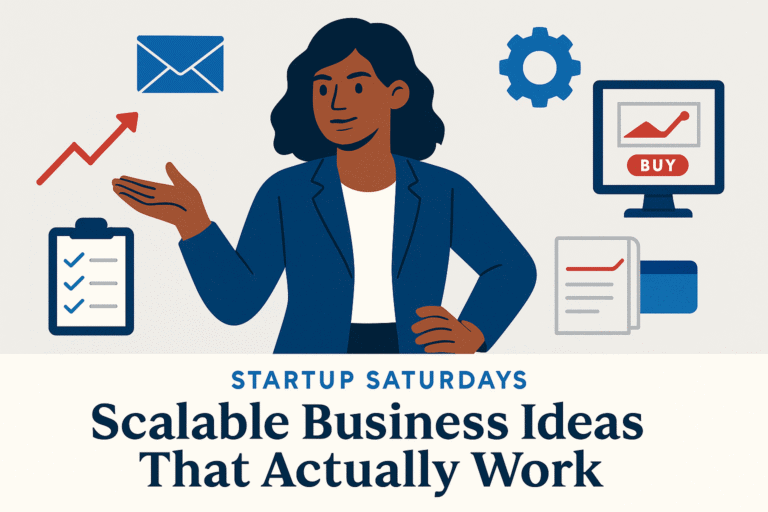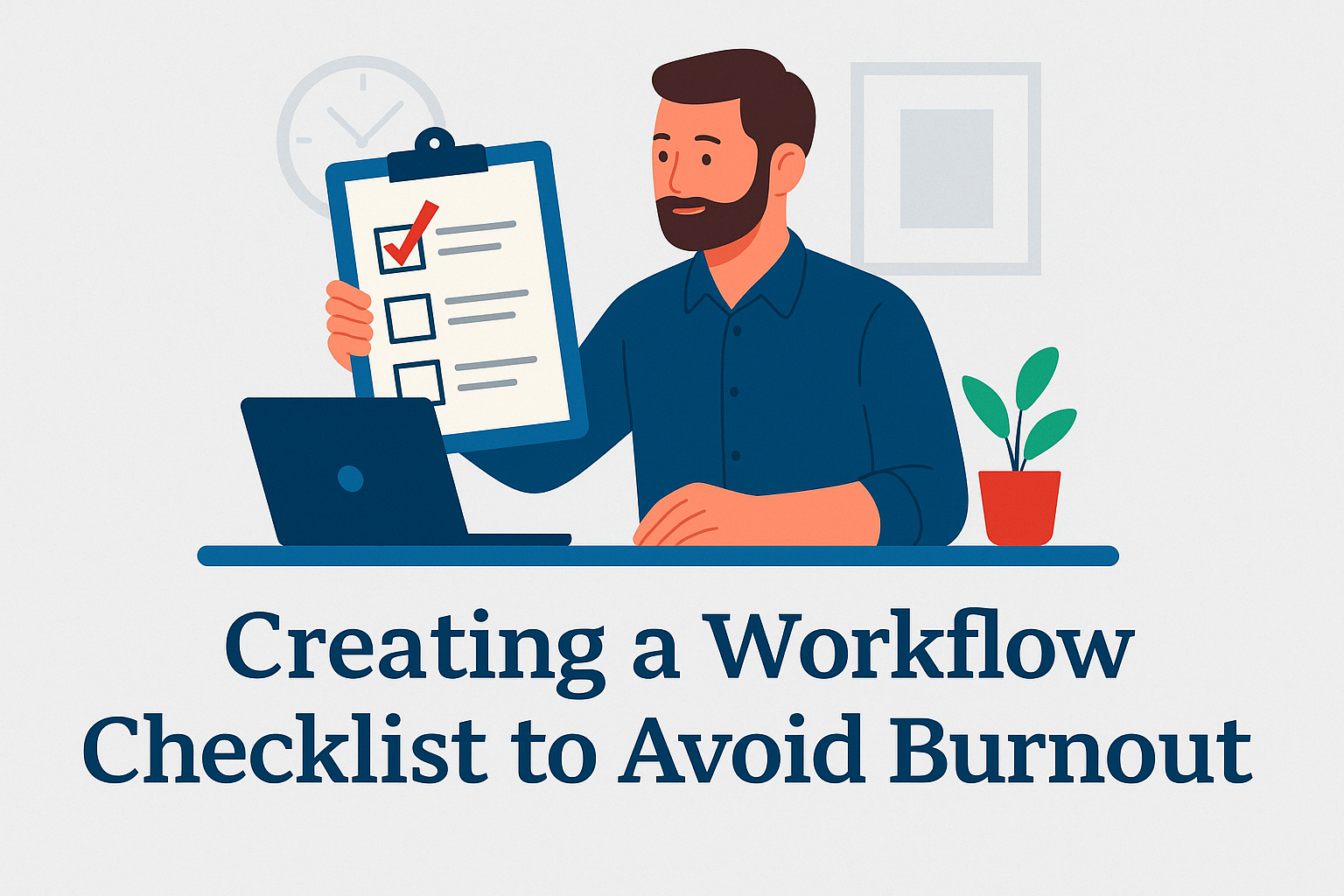CEO Mindset Mondays
The simple path to business success became clear to me the second time I built Backbone America. I already knew what it felt like to run a business without structure—I’d done that in the early years, and it left me working harder than necessary with little to show for it but massive debt. So when I revived Backbone America, I went in with open eyes. I knew I couldn’t keep carrying the entire load myself. The difference this time was urgency: I started creating systems right away.
I pulled from my background as a business process automation engineer, putting tools and workflows in place before the busywork could swallow me again. I wrote SOPs so tasks could be delegated, automated what didn’t need my hands, and freed up space for the parts of the business only I could do—like shaping the vision and strategy. That shift toward simplicity didn’t just make the work lighter. It made the whole path sustainable.
Why Simplicity is the Starting Point
If you’ve ever felt like your business idea is too much to juggle alongside your job, you’re not alone. Most new entrepreneurs assume they have to keep every plate spinning themselves, at least in the beginning. But the truth is, the simple path to business success doesn’t come from piling on more tasks. It comes from stripping away what doesn’t matter so you can protect your time and energy.

When I restarted Backbone America, I had already learned the hard way what happens when a business runs without systems. The first time, I kept everything in my head and worked far harder than I needed to. That experience showed me how quickly things can get heavy without structure. So the second time, I was intentional. I built processes early. When I felt even a little bit of strain on my mental resources, I strategized ways to relieve the burden, because I wanted space for the parts of the business that actually required me—vision, strategy, and long-term direction.
And that’s the shift you can make right now. Even if you’re still in a 9–5, even if your business is just an idea, you can decide to start simple. Focus on one offer. One audience. One repeatable way of delivering value. When you do that, you’ll find momentum doesn’t come from doing more—it comes from doing less, better.
The CEO Mindset Behind Scaling Smart
Most people think scaling means adding more—more products, more platforms, more to-dos. But that’s not how CEOs approach growth. The simple path to business success is about multiplying what already works, not complicating what doesn’t.
That shift starts with how you see your role. Employees are used to measuring their value by how much they personally get done. CEOs measure their value by how well the business can run without them being in every detail. It’s less about output and more about ownership.

When I brought Backbone America back, I leaned hard into this mindset. If I felt resistance, instead of muscling through, I asked: How can I redesign this so it doesn’t depend on me? Sometimes that meant automating. Sometimes it meant creating a process I could hand off. Either way, the goal was the same—build a business that grows because of systems, not because of endless personal effort.
That’s the CEO mindset you need to adopt early: growth is not about doing more, it’s about doing it smarter. If you can make that shift now, you’ll set yourself up for a business that doesn’t drain you—it supports you.
Guardrails for Staying on the Simple Path
Even with the best intentions, it’s easy to let complexity sneak back in. A new tool looks promising, a new idea pops into your head, or someone tells you that you “have to” be on every platform. Suddenly your simple path doesn’t feel so simple anymore.
This is where guardrails come in. CEOs don’t just think about what to do—they’re clear on what not to do. For you, that might mean saying no to three side projects so you can focus on the one offer that will actually move the needle. It might mean ignoring the latest trend until you’ve built consistency in the basics.

One of the tools I leaned on was setting SMART goals (specific, measurable, achievable, relevant, and time-bound). They gave me a way to check myself before chasing every shiny distraction. If a new idea didn’t line up with the bigger strategy, I shelved it. That single habit kept me aligned with where I wanted the business to go instead of where distractions tried to pull me.
The truth is, simplicity doesn’t happen by accident. It’s a discipline. But when you practice it, you’ll find your focus sharpens, your energy stretches further, and your progress feels lighter. And that’s when you know you’re still on the simple path to business success.
Scaling Strategically Without Burning Out
Scaling isn’t about getting bigger at any cost—it’s about growing in a way that keeps working even when your time and energy are limited. The simple path to business success means stacking smart moves, not piling on more tasks.
Think of scaling as a sequence:
Validate before you expand. Don’t build three offers at once. Test one with real customers until you’re confident it solves a real problem. Proof of demand is the foundation.
Systematize delivery. Once your offer works, focus on making delivery consistent and repeatable. A checklist, template, or onboarding workflow takes the weight off your memory.
Invest in leverage. Use the stability you already have—whether it’s your paycheck or steady income—to buy time. That might be a few VA hours or a tool that cuts repetitive work. The payoff is bandwidth for growth.
When I revived Backbone America, this was the difference-maker. My job covered the bills, which gave me space to reinvest in systems instead of scrambling for survival. That safety net let me focus on growth strategies that would compound over time instead of draining me day to day.
Scaling strategically doesn’t mean moving slowly—it means moving on purpose. Each step builds on a foundation strong enough to carry the next, so your business grows stronger, not heavier.
Putting the Simple Path into Action
Long-term strategy is important, but you also need small wins that keep you moving forward right now. The simple path to business success becomes real when you make immediate, repeatable moves that build momentum week by week.
Here are three you can try this month:
Pick one priority project. Commit to the single project that will create the biggest impact in the next 90 days. Let everything else wait.
Capture your steps. Every time you repeat a task—posting on social media, sending a follow-up, onboarding a client—jot down the process. That’s your first SOP, and it sets you up to delegate later.
Automate a task. Choose one thing technology can handle for you, like scheduling posts or sending invoices. Even one small automation can save hours across a month.
These may look simple, but they’re powerful. When you stack them consistently, you’ll realize you’re not just avoiding burnout—you’re quietly building momentum that compounds into growth.
Final Thoughts: It’s Not about Shortcuts
The simple path to business success isn’t about shortcuts or luck—it’s about clarity, systems, and strategy. You don’t have to quit your job tomorrow or chase every new trend to make progress. What matters is building a business that fits your life and scales on your terms.
When you focus on simplicity, you create space for the work that really matters. When you scale strategically, you build a business that lasts. Put those two together, and you’re not just building income—you’re building freedom.
If this resonates with you, I’d love for you to join my mailing list. It’s where I share practical strategies, personal lessons, and mindset shifts designed to help you grow a business that supports the life you actually want. Not recycled tips. Not fluff. Real guidance you can put to work right away. Sign up here.






